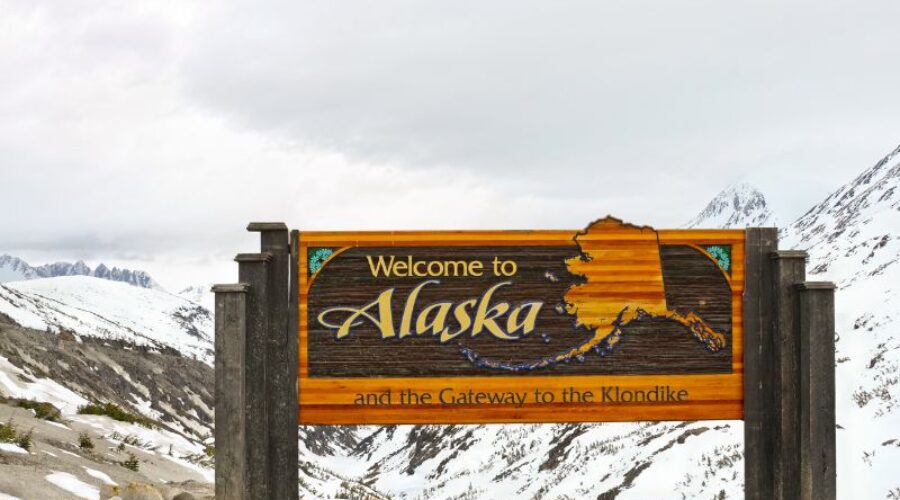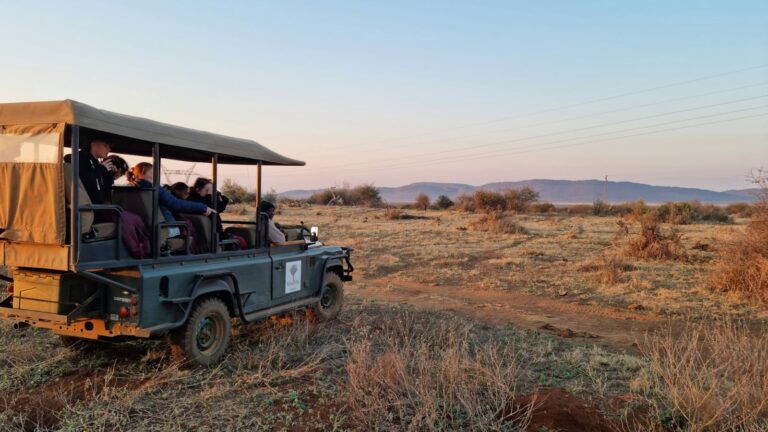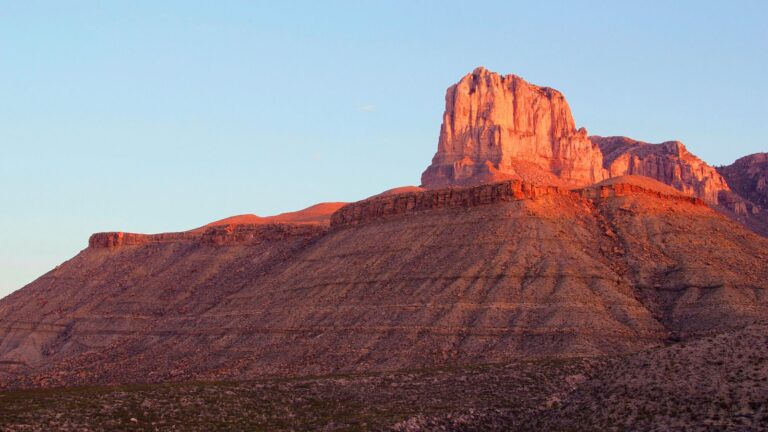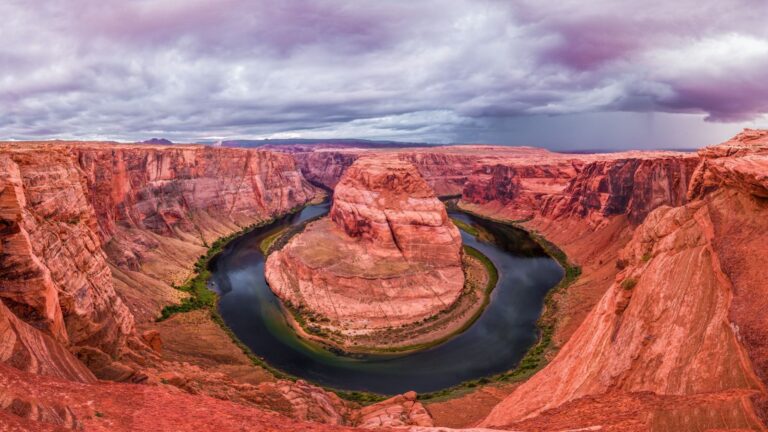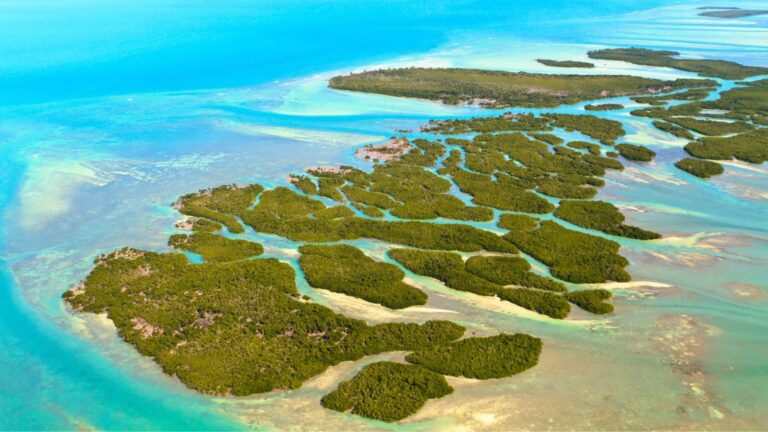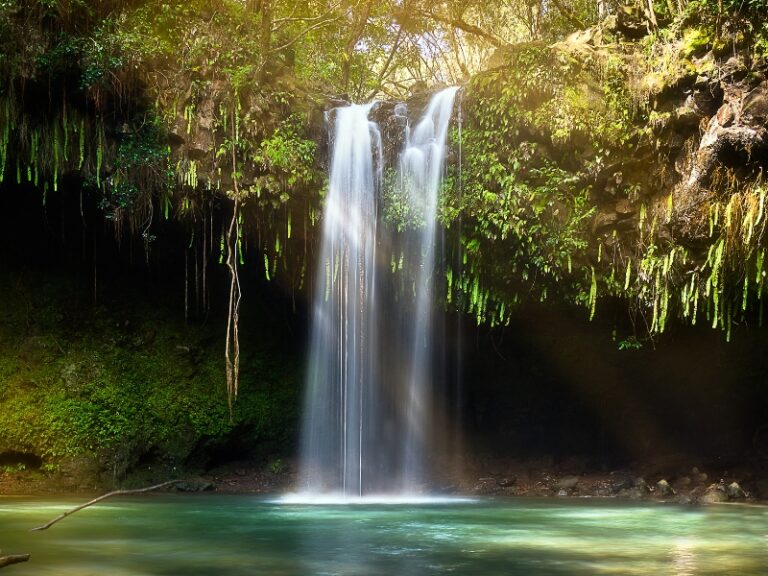8 Amazing Alaska National Parks
Picture yourself savoring views of snow-capped mountains, massive glaciers, lush forests, herds of grazing caribou, brown bears feeding on wild salmon, and giant, gentle moose munching on spruce. Alaska may seem like another planet, but a trip to the last frontier is possible.
When the United States first acquired Alaska in 1867, people mockingly called it “Seward’s Folly.” Today, the last frontier’s rugged wilderness houses some of America’s most beautiful lands within its eight amazing national parks.
Yes, it is remote. It is called the last frontier for a reason. Your adventure will require planning, but these natural treasures are worth the journey. Let’s take a closer look at the Alaska national parks.
Denali National Park & Preserve
Located in south-central Alaska, Denali National Park & Preserve is about halfway between Fairbanks and Anchorage. You can reach the park from either city by car, bus, or train. Although it spans 6 million acres, it has one park entrance and one road: Denali Park Road.
The National Park Service (NPS) provides tour bus rides for those who prefer a narrated experience. Transit buses offer rides for visitors who want more freedom to explore independently.
Denali National Park harbors varied terrains, from mountains and tundra to spruce and glaciers. The park’s crown jewel is its namesake mountain, boasting the tallest peak in North America. Denali is so big that it often gets obscured by clouds. Only 30% of visitors see the mountain. If you want to join the coveted 30% club, plan to visit for a few days to significantly improve your odds of a sighting.
Things to See in the Park
Beyond the gorgeous landscapes, Denali National Park houses some of the most exciting wildlife you can find anywhere. Many visitors hope to observe “the big five” mammals:
- Grizzly bears
- Wolves
- Moose
- Caribou
- Dall sheep
Nothing gets your heart racing like spotting one of the big five while exploring the park. Even the park rangers cannot hide their excitement during these encounters. It is the thrill of a lifetime.
Denali National Park has the only working sled dog kennel in the United States, which is a different type of encounter but exciting nonetheless. You can meet the sled dogs and even watch the puppies race.
Although the surreal landscapes and animals get the headlines, the park offers plenty of beautiful and fascinating plants for you to admire, including Sitka spruce, western and mountain hemlocks, fireweed, devil’s club, skunk cabbage, cloudberries, and crowberries. The park’s rugged landscapes, flora, and fauna deliver an unforgettable wilderness experience.
Where To Stay
When visiting Denali State Park, staying in eco-lodges is the best choice for conscientious travelers who value sustainable tourism and a deep connection with nature. Eco-lodges are designed to have minimal impact on the surrounding ecosystem, using renewable energy sources, and blending harmoniously with the pristine landscapes.
Eco-lodges in Alaska in or near this National Park are Camp Denali and Kantishna Roadhouse (pictured).

Gates of The Arctic National Park & Preserve
America’s northernmost national park, the entire Gates of the Arctic National Park & Preserve, sits north of the Arctic Circle. Stretching 8.4 million acres across the central Brooks Range, it is the second-biggest national park in the United States.
According to NPS visitation statistics, it was our second least-visited national park in 2022, with under 10,000 recreation visits.
Visitors to the Gates of the Arctic National Park must be flexible due to its rugged conditions and sheer unpredictability. Weather is highly unpredictable, and any weather can occur at any time. It has long, severe winters and relatively short summers. Winter is almost always dark, while summer has continuous daylight for a month.
How to Get to the Park
The park does not contain any roads, or official trails for that matter. Hikers typically use “game trails” established by the park’s animal inhabitants.
Visitors must fly or hike into the park. Fairbanks has several small airlines that provide bush plane flights to get there. Some visitors hike from Dalton Highway, an unpaved two-lane industrial road parallel to the park’s eastern border.
What You Can See at the Park
Although it may sound intimidating, those who accept the challenge are rewarded with breathtaking once-in-a-lifetime views. The park displays undisturbed landscapes painted with snowy mountains, blue glaciers, and wild rivers snaking through glacier-carved valleys. You may see unique wildlife, including grizzly bears, muskox, polar bears, moose, caribou, wolves, arctic foxes, snowshoe hares, Dall sheep, and lynx.
The dreamy setting is just what the doctor ordered if you want to get as far away as possible from life’s daily stresses.
Glacier Bay National Park & Preserve
Spanning 3.3 million acres along southeast Alaska’s Inside Passage, Glacier Bay National Park & Preserve showcases jagged, snow-capped mountains, dynamic glaciers, turquoise waterways, and temperate rainforests. The surreal world teems with wildlife and is part of a 25 million-acre World Heritage Site.
How to Get to the Park
Like some of Alaska’s other national parks, it is only accessible by boat or plane. Ironically, it is one of the state’s most accessible parks, thanks to the cruise industry. As such, most visitors experience Glacier Bay from the comfortable decks of a cruise ship. Bring your binoculars, savor your coffee or hot chocolate, sit back, and enjoy the show.
Cruise ships usually spend the better part of a day (nine to ten hours) in Glacier Bay, including a slow, 360-degree spin in front of a tidewater glacier. Park rangers board the ship to provide guidance and answer questions. It may be the most relaxing and unique national park experience in the United States.
Though Alaska cruise season typically runs from May through September, the park is open year-round. It offers limited services in the winter.
If you worry about another ship blocking your view, the NPS only permits two vessels in the park per day. So you will have a front-row seat.
What to See at the Park
Glacier Bay, aptly named, harbors more than 1,000 glaciers. You get a close view of several significant glaciers along the journey. If you experience a glacier calving, the sights, and sounds will be forever etched in your mind.
Many guests are pleasantly surprised at the variety of wildlife sightings, including:
- Sea otters floating on their backs while munching on sea urchins
- Steller sea lions basking in the sun
- Humpback whales coming up for air and playfully splashing in the water
- Mountain goats inching along mountain ledges
- Bears walking along the shore
- Seabirds nesting on cliffs
A Glacier Bay cruise is for you if you desire an easy-to-plan or casual Alaska national park trip. Although more of an observational experience, the park’s landscapes and wildlife deliver an unforgettable adventure.
Katmai National Park & Preserve
Located on the Alaska Peninsula near Kodiak Island, Katmai National Park & Preserve is renowned for bear viewing and sport fishing. The park encompasses approximately 4 million acres of forests, mountains, tundra, and lakes.
More than 2,000 bears call the park home. Following the Brooks River salmon runs, brown bears regularly gather to feed on the salmon at Brooks Falls. Katmai National Park visitors eagerly swarm the Brooks Camp viewing platforms to observe the feeding frenzy.
The park is only accessible by plane or boat. You can arrange flight taxis from Anchorage, King Salmon, Homer, and Kodiak.
Best Time To Visit
Although salmon runs vary yearly, the phenomenon typically occurs in July and September.
Things to Do at Katmai
The park is widely-known for excellent salmon and trout fishing if you are wondering what you can do at Katmai National Park and Preserve. Many visitors enjoy canoeing, kayaking, or white water rafting. For those who love wildlife watching, gray wolves inhabit the area. You may spot humpback whales and sea otters along the park’s shores.
Katmai National Park is also home to the largest volcanic eruption of the 20th century, Novarupta. The 1912 eruption sent ash 20 miles into the air, forever changing the landscape. Explore the vast area of ash and lava flows dubbed the Valley of Ten Thousand Smokes.
Where To Stay
You can stay at campgrounds or cabins within the park. The park’s most known accommodation, Brooks Lodge, sits within Brooks Camp and is available from June to mid-September. Surrounding communities like King Salmon, Naknek, Homer, Kodiak, and Anchorage also offer accommodations. Or you can stay in eco-lodges that are designed to have minimal impact on the surrounding ecosystem, using renewable energy sources, and blending harmoniously with the pristine landscapes.
From eco-lodges in Alaska near Anchorage, there is Ultima Thula Lodge (pictured).
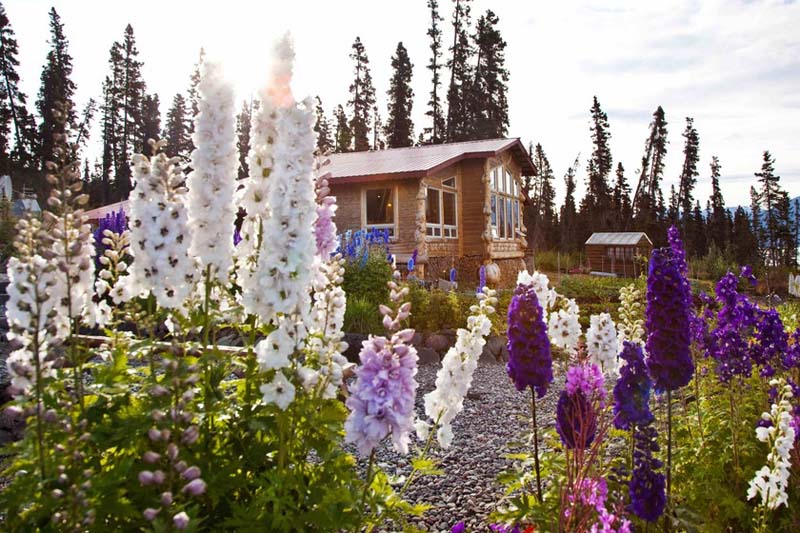
Kenai Fjords National Park
Situated on the Kenai Peninsula near Seward in south-central Alaska, Kenai Fjords National Park appears stuck in the ice age. The 600,000-acre park comprises the Harding Icefield, nearly 40 glaciers, coastal fjords, lush forests, and icy waters.
Unlike some of Alaska’s other national parks, you can drive to Kenai Fjords National Park, a 2.5-hour road trip from Anchorage. Although to fully experience all the park offers, you need to explore by land, air, and water. You can also access the park by the Alaska Railroad and some cruises during the summer season.
Things to Do and See at the Park
Kenai Fjords National Park houses a wide range of wildlife, including black and brown bears, wolves, moose, mountain goats, humpback whales, orcas, fin whales, seals, porpoises, bald eagles, and puffins.
The Exit Glacier is the park’s most accessible glacier and the only one you can reach by car. Accordingly, it is the park’s most popular area. You will find fantastic hiking trails that provide various viewpoints of the famous glacier.
Kenai Fjords National Park shines with its unique adventures like ice climbing, glacier hiking, kayaking in front of a glacier, flightseeing tours, and boat tours between the fjords. These truly qualify as one-of-a-kind experiences since most parks do not have these opportunities.
Where to Stay
Staying in eco-lodges when visiting Kenai Fjords National Park is the ideal choice for environmentally conscious travelers. These lodges prioritize sustainability, minimize their ecological impact, and offer an immersive experience amidst the park’s untouched beauty. By supporting local communities and reducing carbon footprints, eco-lodges provide a guilt-free and unforgettable stay.
Eco-lodges in Alaska in or near this National Park are Orca Island Cabins (pictured), Kenai River Lodge, Tutka Bay Lodge, Winterlake Lodge, and Ridgewood Lodge.

Kobuk Valley National Park
Located in northwestern Alaska, about 25 miles above the Arctic Circle, Kobuk Valley National Park holds 1.75 million acres of untouched boreal forest, tundra, and dunes. The Great Kobuk Sand Dunes, the Arctic’s most giant active dunes, may appear out of place, but they and the Kobuk River make the park unique.
Roughly half a million caribou migrate annually across the dunes and through Onion Portage, an archaeological site in the Kobuk River with wild onions growing along the river’s banks. For thousands of years, Onion Portage has been a meeting ground for the Inupiat and their ancestors to harvest migrating caribou. That tradition continues to this day.
How to Get to the Park
Kobuk Valley National Park abounds with remote backcountry. A trip to the park will test your planning aptitude, adaptability, and perseverance. The park has no roads, designated trails, or services. You can experience snow or bitter-cold temperatures any time of year.
Reaching Kobuk Valley requires arranging multiple flights well in advance and allowing contingencies in case bad weather arises. Most visitors start by taking a commercial flight to Anchorage or Fairbanks. From Anchorage, you can fly to Kotzebue, then hire an air taxi to reach the park. If you go to Fairbanks, you can catch a flight to Bettles, then hire an air taxi to drop you off in the park.
The NPS suggests visitors be well prepared for wilderness survival or travel with an experienced outfitter. With a remote location and the need for multiple flights and a guide, a trip to Kobuk Valley National Park will likely cost thousands of dollars. No wonder the park received fewer than 17,000 visitors last year; it is America’s third least-visited national park.
Activities in Kobuk Valley National Park
Popular activities in the park include backpacking, camping, fishing, and floating. Using a collapsible kayak or canoe is the best way to float down the slow-moving Kobuk River, relishing views of lush forests and tundra along the journey.
The park harbors a fascinating variety of wildlife. Kobuk River inhabitants include salmon, Arctic char, and sheefish. By the millions, birds flock to the area each spring to breed. You may spot the Arctic tern, which flies from Antarctica to complete the world’s longest migration. Mammals include caribou, grizzly bears, arctic foxes, moose, wolves, and Dall sheep.
Only one amphibian, the fascinating wood frog, lives in Kobuk Valley National Park; most amphibians cannot survive the cold. The wood frog’s liver produces large amounts of sugar to prevent its cells from being damaged. Ice crystals form inside its body in winter. Due to its adaptive liver, ice forms around its cells rather than in them.
If you hope to see the mesmerizing northern lights, winter, although cold and unpredictable, is the best time to go to this Alaska National Park. From June 3 to July 9, the sun does not set in Kobuk Valley. Many visitors prefer summer due to ample daylight, warmer temperatures, and active wildlife.
Lake Clark National Park & Preserve
Located on the Alaska Peninsula about 100 miles southwest of Anchorage, Lake Clark National Park & Preserve offers 4 million acres of various stunning landscapes, from craggy snow-covered mountains and glaciers to crystal clear lakes and streams. It also has hot springs and alpine meadows.
The park proudly preserves the ancestral homelands of the Dena’ina people. It has an intact ecosystem at the headwaters of the world’s largest sockeye salmon, or red salmon, fishery in the Bristol Bay region. Mount Redoubt, the park’s highest peak, is an active volcano with steep sides where visitors occasionally observe steam venting from its top.
How to Get to the Park
Although reasonably close to Anchorage, there is no road to the park or roads inside. You can access the park by boat or plane. Many visitors fly from Anchorage, Kenai, or Homer. Most flights take one to two hours and use a float plane that will land on one of the park’s pristine lakes. Lake conditions dictate if the landing will be on floats or skis. Either way, it is an adventure.
When To Visit the Park
Lake Clark National Park & Preserve is open year-round but has limited visitor services from Labor Day through Memorial Day. Many people visit in summer due to better conditions and more park services. In 2022, the park received just over 18,000 visitors, the fourth least-visited United States national park.
The park has two distinct climate regions, the coast, and the park’s interior. Its coast has milder temperatures but is wetter. The interior typically gets half as much precipitation but has more extreme temperatures, hotter in summer and colder in winter.
Things to Do at Lake Clark National Park & Preserve
Lake Clark National Park & Preserve contains campgrounds and accommodations, including cabins, lodges, and bed & breakfasts. Independent businesses, not the NPS, operate the lodgings on private land within the park.
Popular activities include sport fishing, world-class brown bear viewing, hiking, camping, and kayaking. The park has a few different areas where you gain excellent vantage points to observe the bears feeding on salmon.
For those who love trees, you will find thick birch groves and hillsides dotted with lush spruce. The different landscapes and dense forests attract many resident and transient bird species, including various songbirds, bald and golden eagles, ducks, swans, geese, loons, puffins, cormorants, and owls. If you enjoy wildlife watching, the park has brown and black bears, caribou, moose, wolves, red foxes, and Dall sheep.
Where to Stay
Choosing eco-lodges for your stay is a fantastic option for environmentally conscious travelers. These lodges prioritize sustainability, blend seamlessly with the natural surroundings, and offer a memorable experience in the park’s pristine beauty. By minimizing carbon footprints, they provide an eco-friendly and unforgettable stay.
Eco-lodges in Alaska in or near this National Park are Great Alaska BearCamp (pictured).

Wrangell-St. Elias National Park & Preserve
America’s largest national park, Wrangell-St. Elias National Park & Preserve sits in southeastern Alaska. It stretches over 13 million acres, encompassing mountains, volcanoes, glaciers, and historic sites. You can squeeze six Yellowstone National Parks within Wrangell-St. Elias National Park & Preserve. Its astounding size, scope, and beauty are mind-boggling.
The park proudly claims several other noteworthy distinctions. Four major mountain ranges meet in the park, comprising nine of America’s 16 highest peaks. Mount Wrangell is one of North America’s largest active volcanoes at 14,163 feet. Mount St. Elias is the second-highest peak in the United States at 18,008 feet. Both are in the park.
Everything about this place is super-sized:
- Bagley Icefield is North America’s second-largest nonpolar icefield
- Nabesna Glacier is the world’s longest interior valley glacier
- Malaspina Glacier is the continent’s largest nonpolar Piedmont glacier
- Hubbard Glacier is North America’s longest tidewater glacier
How to Get to the Park
Many visitors fly to Anchorage or Fairbanks and then use a car, shuttle service, or flight taxi. Only two roads enter the park. Both are unpaved and serviced by the state of Alaska rather than the NPS.
Park services and facilities are limited, some 260 miles apart. Nabesna Road, 42 miles long, enters the park in the north, while McCarthy Road, 59 miles long, enters the park in the south. There are no gas stations within the park, so be sure to start your journey into the park with a full tank.
Copper Center sits just outside of the park on Richardson Highway. The area houses the park’s visitor center, open from May through September, and offers fantastic park views.
The park contains three primary districts that impact your visit:
- Nabesna District is in the north near Slana, 75 miles northeast of Copper Center
- Kennecott District is in the south near Chitina, 50 miles southeast of Copper Center
- Yakutat District sits along the coastline and is only accessible by boat or plane
The park has two towns, McCarthy and Kennecott (sometimes spelled Kennicott). They are both reachable by flying or driving McCarthy Road. Either town makes a good home base and offers guided excursions like hiking, backpacking, and flightseeing.
When to Visit the Park
Wrangell-St. Elias has an interior continental climate. This means winters are long and very cold, while summers are warm and relatively dry. May to mid-September is a good time to visit since the visitor center is open, the days are long, and temperatures remain warm to cool. June and July typically deliver drier weather than August and September. July draws the most visitors, so late June may be your best visitation window.
Things to Do at the Park
Popular park activities include mountaineering, floating and boating, sport hunting and fishing, and wildlife viewing. In winter, visitors enjoy cross-country skiing, snowshoeing, and snowmobiling.
Historically, many people came to the area to find gold; some found their fortune in gold, silver, or copper. The Kennecott Mines produced copper ore worth millions of dollars, earning a spot on the National Register of Historic Places. Thus, visitors who like history should stop by the Kennecott Mines National Historic Landmark.
Although vegetation is sparse in much of the park, it is home to lots of wildlife, including mountain goats and Dall sheep along the craggy peaks, caribou feeding on sedges on the slopes of the Wrangells, moose meandering through the forested lowlands, and bears freely roaming. You may also spot bald eagles, bison, sea lions, harbor seals, and red, gray, and arctic foxes.
Where to Stay
Staying in eco-lodges is the best choice for travelers who value sustainable tourism and a deep connection with nature. These lodges prioritize environmental conservation, reduce their carbon footprint, and support local communities, providing an immersive and eco-friendly experience amidst the park’s stunning landscapes.
Eco-lodges in Alaska in or near this National Park are Tebay Lodge (pictured).
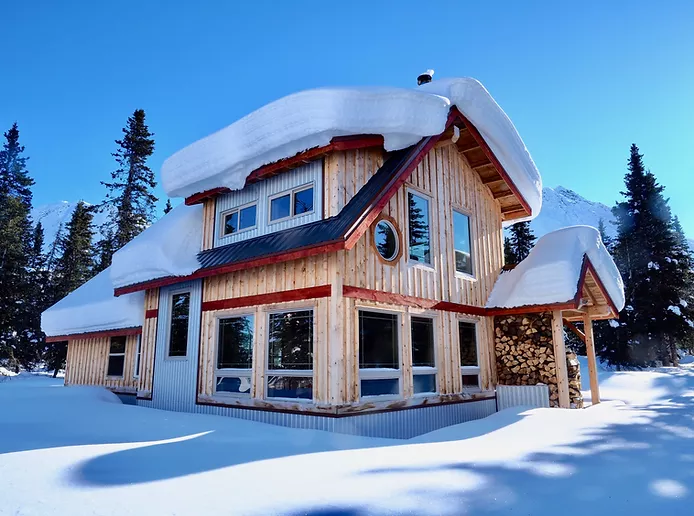
Wrap-Up: Alaska National Parks
The last frontier offers surreal beauty amongst its untouched wilderness, exotic wildlife, and gorgeous landscapes. To reach any of the Alaska national parks requires a longer and more thoroughly planned journey than the national parks in the Lower 48. Your efforts are rewarded with unforgettable experiences on the trip of a lifetime. Worth the journey? Absolutely!
This article originally appeared on Wealth of Geeks.
Scott and Julie blog at Miles with McConkey. After nearly 30 years, they took a leap of faith to leave the corporate world to enjoy a life of travel and adventure. They hope to inspire you to find ways to travel more and enjoy life now.

